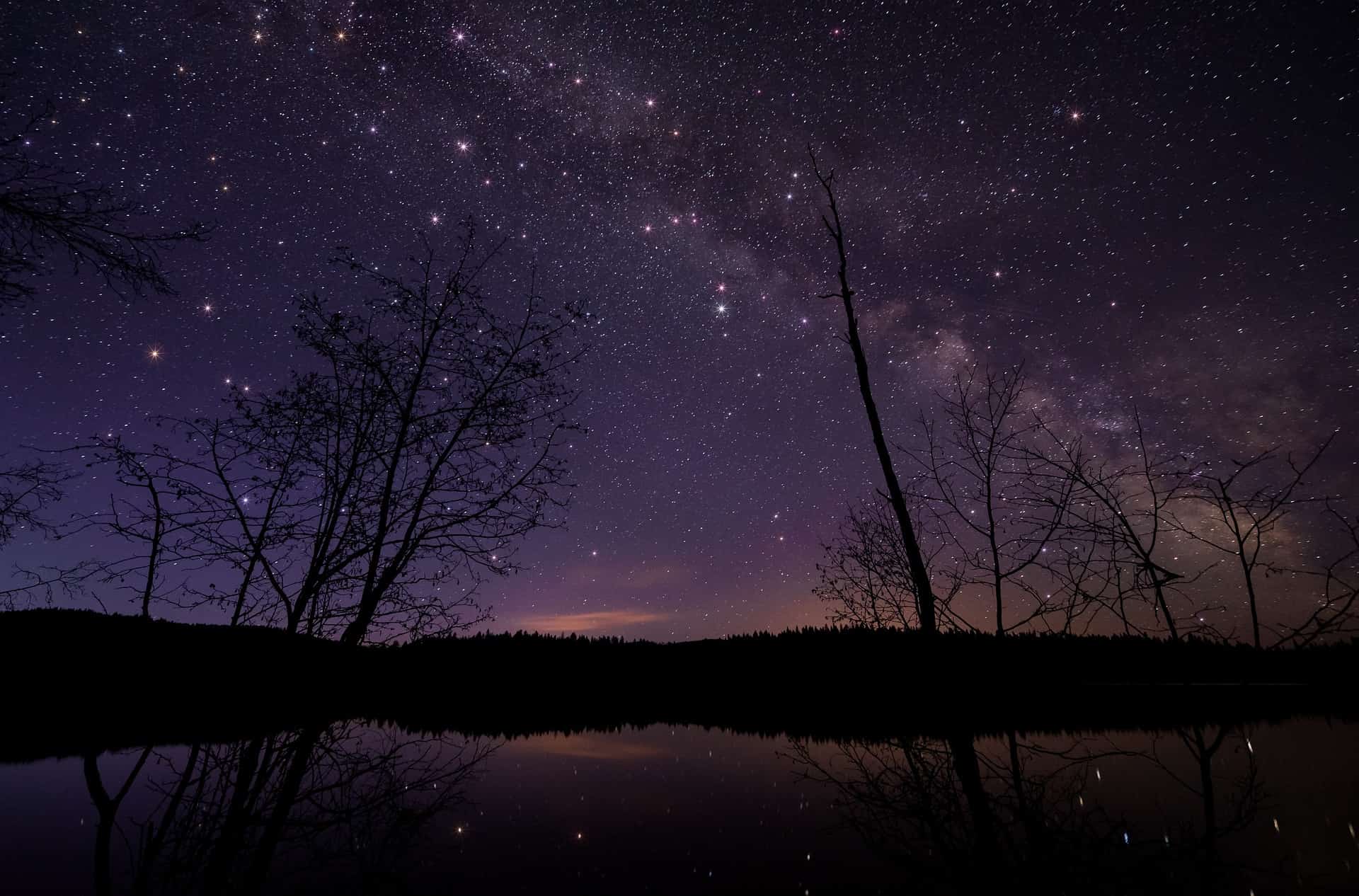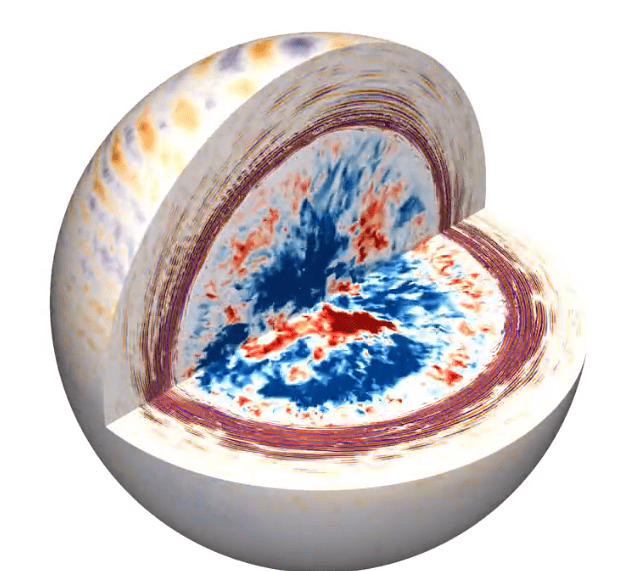Stars twinkling in the night sky can be a breathtaking site. From our vantage point on Earth, stars twinkle because the atmosphere bends light as it travels. But there’s another, innate twinkle caused by rippling waves of gas.
Now a new study led by Northwestern University researchers found that these innate sparkles can also produce haunting sounds.

Stars’ innate twinkling
First, the study took a unique approach to understanding the twinkling phenomenon. Researchers developed 3D simulations of massive stars, tracing the path of energy rippling from their cores to their surfaces. These ripples are generated by a turbulent process called convection, akin to fueling thunderstorms. As the waves of energy reach the surface of the stars, they cause subtle variations in brightness. This is what produces the twinkling effect.
“Motions in the cores of stars launch waves like those on the ocean,” said Evan Anders, lead author and a postdoctoral fellow in Northwestern’s Center for Interdisciplinary Exploration and Research in Astrophysics (CIERA).
“When the waves arrive at the star’s surface, they make it twinkle in a way that astronomers may be able to observe. For the first time, we have developed computer models which allow us to determine how much a star should twinkle as a result of these waves.”
But this was just the first part. Then, Anders and company took this a step further and transformed the gas ripples into sound waves that you can hear.
How to hear the sound of a star
The idea of stars producing sounds might seem surprising, as space is typically considered a silent vacuum. However, all stars produce infrasound acoustic waves due to turbulence in their interiors. These sounds are too low-frequency for a human ear to hear and they differ from the sound waves we encounter on Earth. However, the underlying physics of wave generation remains the same.
The biggest stars (like the biggest musical instruments) produce the lowest, deepest sounds — like a tuba. Small stars have high-pitched voices, like celestial flutes. Stars don’t just produce one sound, either — they often produce thousands of different sound waves that bounce around the star.

To bring the cosmic concert closer to human perception, the researchers had to adjust the natural frequencies of the waves. The original frequencies were outside the range of human hearing, so they uniformly increased the waves to make them audible.
In the new study, large star sounds resembled a “warped ray gun”, evoking images of a cosmic battleground. Medium-sized stars produced a persistent hum while small stars emitted a plaintive sound. The researchers then passed well-known songs through the stars to provide a more relatable context. This allowed us to hear how these celestial bodies transformed the familiar tunes.
They passed a short audio clip from “Jupiter” (a movement from “The Planets” orchestral suite by composer Gustav Holst) and from “Twinkle, Twinkle, Little Star” through the three sizes.
“We were curious how a song would sound if heard as propagated through a star,” Anders said. “The stars change the music and, correspondingly, change how the waves would look if we saw them as twinkling on the star’s surface.”
The study is more than just a fun art project. It has significant implications for astronomers’ understanding of stars and their inner workings. Scientists can now gain valuable insights into a star’s core convection dynamics by analyzing the twinkling patterns and the corresponding sound waves. By listening to the melodies of the stars, we can gain deeper insights into the celestial bodies that light up our night skies. This opens up a whole new way of experiencing and understanding the cosmos.
The study was published in the journal Nature Astronomy.









